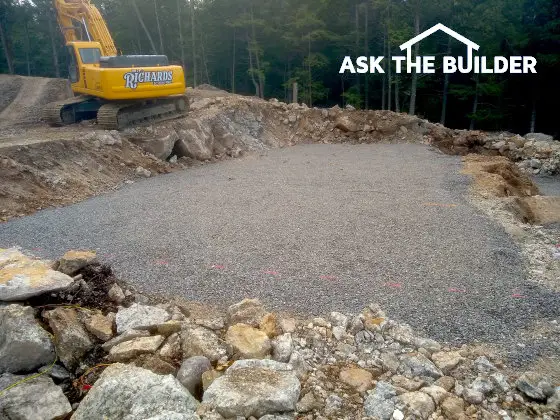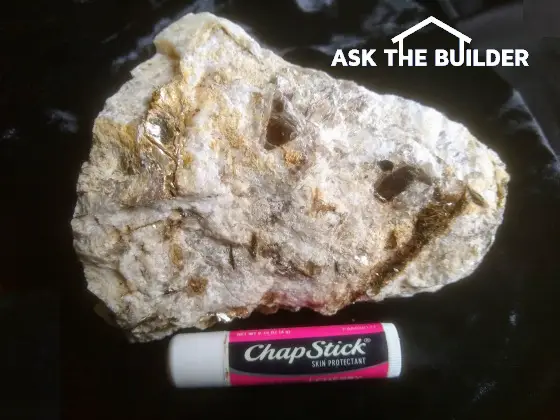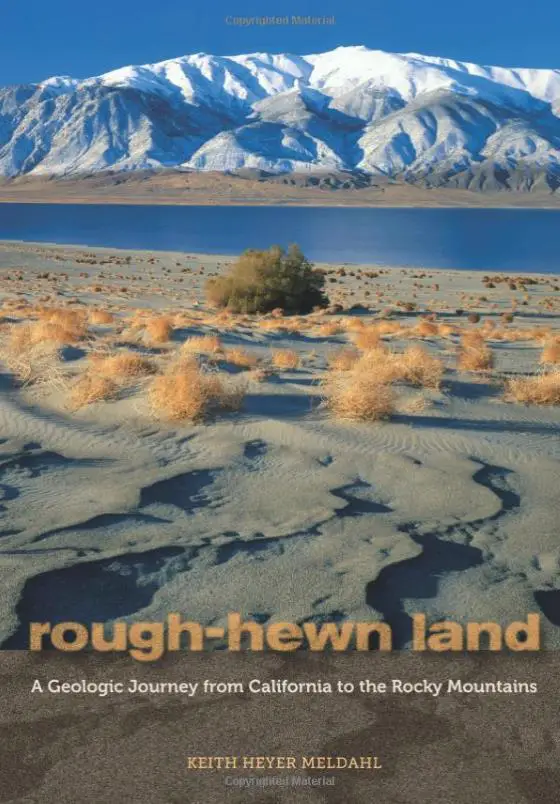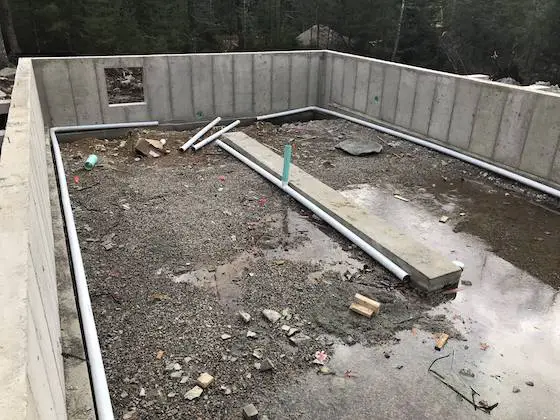Building on Granite Bedrock

Building on Granite Bedrock | Hundreds of pounds of dynamite were used to pulverize millions of pounds of solid granite to create this pad to build a home. It’s just the beginning of the challenges. Copyright 2021 Tim Carter
Building on Granite Bedrock - It's Hard and Expensive
I live in central New Hampshire and its nickname is The Granite State. Trust me, they don't call it that for nothing! My own house sits directly on top of one of the enormous granite plutons that can be found beneath the forests and streams of the second-most beautiful state in the USA. As I type this I'm sitting on top of the Meredith Porphyritic Granite. A giant piece of this solid bedrock is right next to my driveway. What a perfect place to live when you realize my college major was geology.
This granite formed 340 million years ago about 80 miles beneath the surface of the planet along the edge of a tectonic plate. Giant blobs of this molten rock slowly floated up to the surface over millions of years cooling ever so slowly during its journey. A pluton resembles a hot air balloon both in shape and movement. Many geologists consider the Meredith Porphyritic Granite to be the most beautiful rock in all of New England because of its massive feldspar crystals and mica inclusions.

Meredith Porphyritic Granite - a giant feldspar crystal is up top and wraps around behind the sample. Mica inclusions are common as are smaller mica flecks. This was exposed to sunlight for the first time in 340 million years in late June of 2021. The sample was collected at: 43.575129, -71.540072 (ChapStick for size comparison)
Read the first few chapters in this astonishing book meant for homeowners like you, not geologists, to grasp exactly how granite is formed from seafloor sediments that are sucked down underneath the edge of a continent. Rough Hewn Land is an amazing, easy, and fun read. Wait until you see how the author makes fun of his wife in some of the photo captions. She must have a great sense of humor!

Rough Hewn Land by Keith Heyer Meldahl - I read this twice it was so good. CLICK or TAP HERE or THE BOOK COVER now to have this in your hands in days or minutes should you be a Kindle user.
About a month ago, I was eating breakfast and I thought I heard a sonic boom. Just north of where I live military planes routinely practice flying over the White Mountains, and I thought one had gone astray and was making a fast tight turn to get back to where he should have been.
It turns out I was wrong and a new home site was being prepared above my house. A blasting company employing hundreds of pounds of dynamite was in the process of pulverizing tens of millions of pounds of this Meredith Porphyritic Granite shaking my house every other day for three weeks.
My Blasting Ledge column has more on using dynamite or TNT for blasting bedrock.
Is Blasting Granite Bedrock Expensive?
You have to want to build badly if you decide to go to all this trouble to blast solid rock. First and foremost blasting is expensive. Two previous owners of the land above me went bankrupt trying to prepare the site for a house. They ran out of money and sold the land to the next person in line. It appears the current landowner has much deeper pockets as the blasting is complete and he’s about to pour a footing.
It’s one thing to build a smaller lighthouse on solid rock, but it’s quite another to build a typical residential home on top of solid bedrock. You may be thinking of buying land to build your dream home. If so, be sure to review the soil map to check the depth of the soil on the lot you want. These soil maps are usually available online at no cost.
What Challenges Does Building on Granite Present?
Building on bedrock makes some tasks that are normally simple become painfully difficult. Let’s run down the list.
Digging any hole or trench requires blasting. In normal deep clay soil, an excavator can dig a 10-foot deep 2-foot-wide trench for a sewer line in an hour or two. Forget about doing this in solid rock. There’s no way you’ll discover city sewers in most places where you have solid rock just inches beneath the surface. It’s just too expensive to install sewers in these conditions.
This means you’ll probably have to blast out an area for your septic tank. What kind of special septic design will be required for the leach field that must be perched above the solid rock? This is something you want to talk about with a septic designer before you make an offer on the building lot.
Did you want underground electricity into your new home? The National Electrical Code is quite specific about how deep these lines must be buried. Will you have to blast that trench too?
How will you get your foundation drain tile to daylight? The last thing you want to be doing is blasting a pit into solid bedrock where your basement will be. Have you ever seen photos of spent quarries and how they’re filled with water? Your basement will become an unwanted indoor swimming pool.
How will the water line get from the well to your house? Will a trench have to be chiseled with a monster jackhammer on an excavator’s arm?
How much fill dirt will you have to truck in as well as topsoil to create enough soil to grow plants, bushes, and trees?
Should I Be Worried about Radon in Granite?
Yes, you should be worried about radon in granite. What about radon? Be sure to check the online map for the likelihood of radon. Blasting fractures the rock beneath your new home. This can funnel radon into your home. If you feel this might happen, you can deal with it fairly inexpensively using a passive radon collection and exhaust system.
An interconnected network of perforated 4-inch pipes needs to be placed within the gravel under your crawlspace or basement slab. I’d surround the inside of the footing with this piping and then put pipes across the floor every 6 or 8 feet that connect with the outer band of pipes. Be sure to install a high-performance vapor barrier over the pipes and gravel before pouring the concrete floor. This material should meet or exceed ASTM E 1745.

Radon Collection Piping |The white pipe is perforated and radon will flow into it. This new house sits on solid granite. There are many other pipes still to be installed that will connect with the ones you see. The green vertical pipe will eventually extend up through the house to the roof. Copyright 2021 Tim Carter
Strategically place one or two 4-inch pipes that connect to the under-slab pipes and then poke out of the slab. These will eventually be connected to 4-inch PVC pipes that run up through interior walls and out the roof. Flash these pipes as you would any plumbing vent pipe.
When the wind blows across the top of these radon vent pipes, it creates a vacuum and sucks the radon out of the ground below your home.
Column 1415
One Response to Building on Granite Bedrock